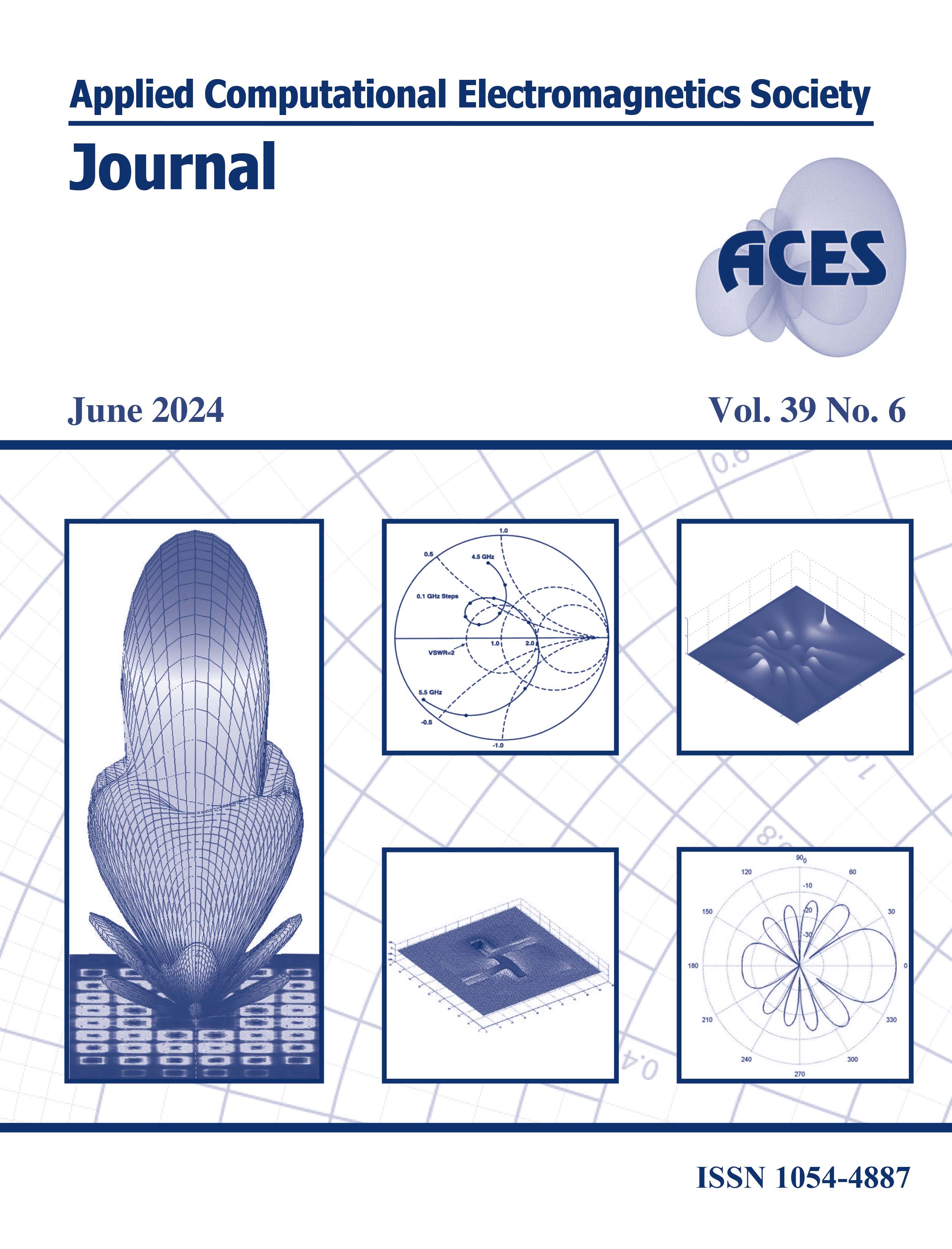An Accelerated Ray Tracing Method based on Embree3 Ray Tracing Library for Targets with Non-uniform Thickness Materials
DOI:
https://doi.org/10.13052/2024.ACES.J.390606Keywords:
Accelerated ray tracing method, Thick materials, Electromagnetic scatteringAbstract
This paper proposes an accelerated ray tracing method utilizing the Embree3 ray tracing library for targets with non-uniform thickness materials. In contrast to the traditional surface-based ray tracing, the proposed approach performs ray tracing within the materials, since surface tracing is ineffective for materials with non-uniform thickness. To ensure efficiency and handle the overlapping grids between different materials, the Embree3 ray tracing library is introduced to ray intersection. Numerical results confirm that the proposed method surpasses existing methods in terms of efficiency and applicability while maintaining accuracy.
Downloads
References
R. Gholami and V. Okhmatovski, “Surface–volume–surface EFIE formulation for fast direct solution of scattering problems on general 3-D composite metal–dielectric objects,” IEEE Trans. Antennas Propagat., vol. 68, no. 7, pp. 5742-5747, July 2020.
B. Stupfel, “Homogenization of a multilayer coating: Application to model-order reduction,” IEEE Trans. Antennas Propagat., vol. 69, no. 3, pp. 1528-1534, Mar. 2021.
W. Chen, L. Wang, Z. Wu, M. Fang, Q. Deng, A. Wang, Z. Huang, X. Wu, L. Guo, and L. Yang, “Study on the electromagnetic scattering characteristics of high-speed target with non-uniform plasma via the FCC-FDTD method,” IEEE Trans. Antennas Propagat., vol. 70, no. 7, pp. 5744-5757, July 2022.
Z. Xie, Z. Liang, H. Yue, and P. Gao, “A shooting and bouncing ray method for dielectric media,” in 2017 International Applied Computational Electromagnetics Society Symposium (ACES), pp. 1-3, 2017.
Y. Huang, Z. Zhao, X. Li, Z. Nie, and Q. H. Liu, “Volume equivalent SBR method for electromagnetic scattering of dielectric and composite objects,” IEEE Trans. Antennas Propagat., vol. 69, no. 5, pp. 2842-2852, May 2021.
H. Ding, P. Gao, Y. Tao, and H. Lin, “Kd-tree based fast facet visibility test in iterative physical optics,” in 2013 IEEE Antennas and Propagation Society International Symposium (APSURSI), Orlando, FL, pp. 1788-1789, 2013.
J. Huo, L. Xu, X. Shi, and Z. Yang, “An accelerated shooting and bouncing ray method based on GPU and virtual ray tube for fast RCS prediction,” IEEE Antennas Wireless Propagat. Lett., vol. 20, no. 9, pp. 1839-1843, Sep. 2021.
H. Liu, B. Wei, and H. Wang, “A fast shooting and bouncing ray algorithm for electromagnetics scattering based on bounding volume hierarchy,” in 2023 IEEE 7th International Symposium on Electromagnetic Compatibility (ISEMC), Hangzhou, China, pp. 1-3, 2023.
T. Möller and B. Trumbore, “Fast, minimum storage ray-triangle intersection,” Journal of Graphics Tools, vol. 2, no. 1, pp. 21-28, 1997.
P. H. Pathak and R. J. Burkholder, Electromagnetic Radiation, Scattering, and Diffraction. Hoboken, NJ: Wiley-IEEE Press, 2022.
W. C. Chew, Waves and Fields in Inhomogeneous Media. Hoboken, NJ: Wiley-IEEE Press, 1995.
W. Gordon, “Far-field approximations to the Kirchoff-Helmholtz representations of scattered fields,” IEEE Trans. Antennas Propagat., vol. 23, no. 4, pp. 590-592, July 1975.




